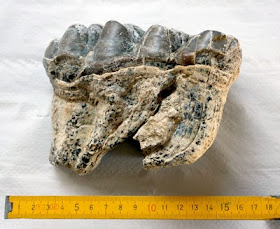

Included among the rocks and dried plants were two elephant skulls, one from Ceylon-now Sri Lanka-and the other from the Cape of Good Hope, in present-day South Africa.īy this point, Europe was well acquainted with elephants occasionally one of the animals had been brought to the Continent as a royal gift, or to travel with a fair. Rudwick relates, in “Bursting the Limits of Time” (2005), a hundred and fifty crates’ worth was delivered to the city’s National Museum of Natural History. Booty, in the form of art, jewels, seeds, machinery, and minerals, was streaming into Paris. France was in the midst of the military campaigns that would lead to the Napoleonic Wars, and had recently occupied Belgium and the Netherlands. Although he left behind no record to explain his choice, it’s likely that it had to do with loot. An older colleague later described him as popping up in the city “like a mushroom.”įor his inaugural lecture, Cuvier decided to speak about elephants. Nevertheless, he had managed to secure a prestigious research position there, thanks to the passing of the ancien régime, on the one hand, and his own sublime self-regard, on the other. Cuvier had grown up in a small town on the Swiss border and had almost no connections in the capital. He had wide-set gray eyes, a prominent nose, and a temperament that a friend compared to the exterior of the earth-generally cool, but capable of violent tremors and eruptions. Cuvier, who was twenty-six, had arrived in the city a year earlier, shortly after the end of the Reign of Terror. In another instance in 2016, a sinkhole in Florida’s Aucilla River (opens in new tab) was declared an "archaeological gold mine" after an ancient human tool and mastodon bones are found inside.On April 4, 1796-or, according to the French Revolutionary calendar in use at the time, 15 Germinal, Year IV-Jean-Léopold-Nicholas-Frédéric Cuvier, known, after a brother who had died, simply as Georges, delivered his first public lecture at the National Institute of Science and Arts, in Paris. For example, on October 16, 1963, Marshal Erb was using a dragline to excavate a pond and found fossils that came to be known as the Perry Mastodon. Sometimes, they are found in unusual places. There have been many mastodon fossil discoveries in the past few hundred years. Not long after, in 1807, Thomas Jefferson personally financed an expedition that was by led William Clark to excavate mastodon and mammoth fossils from the Big Bone Lick site in Kentucky. The first mastodon fossils were found in 1705, according to the Oregon History Project, when a large tooth and bone fragments were found in the Hudson River Valley in New York. (Image credit: Sergio de la Rosa) Fossil discoveries Sculptures by artist Sergio de la Rosa show three elephant relatives, from left to right: the mastodon, the mammoth and the gomphothere. Coupled with the coming out of the Ice Age and fighting off humans, the species just couldn't survive. It is likely that the disease didn't kill off the animals directly, but made them weak. Though death by disease sounds like a cut-and-dry answer, "Extinction is usually not a one-phenomenon event," Rothschild told Live Science. This led the researchers to think that a tuberculosis pandemic contributed to their extinction. They found that 52 percent of the 113 mastodons they studied had signs of tuberculosis. Others, like researchers Bruce Rothschild of the Northeastern Ohio Universities College of Medicine and Richard Laub of the Buffalo Museum of Science in New York, have a different theory. Some scientists think that the Earth warmed up from the Ice Age too quickly for the mastodon to adapt or that humans hunted them to extinction. Most of these theories boil down to climate change and/or human hunting, according to Simon Fraser University. Mastodons went extinct around 10,000 years ago. They typically inhabited spruce woodlands around valleys and swamps, according to Cochise College. Though mastodons appeared primarily in North and Central America, they eventually spread all over the world, in every continent except for Antarctica and Australia.


 0 kommentar(er)
0 kommentar(er)
